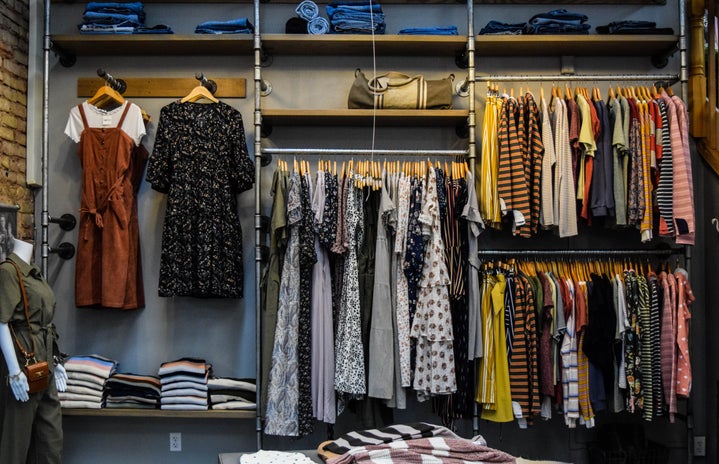Dressing to your unique body type is an idea that I’d heard of, but I had never heard of anyone actually putting it into practice — and for good reason.
It seems to be an older notion that dressing to a certain body type can help hide or
accentuate certain parts of the body. Publications like Bustle and BuzzFeed have gone as far as to condemn and parody this idea that women fit into categories of six to 12 different body types. Women’s bodies are often equated to a fruit shape or a geometric shape — a strange way to equate a wide range of vastly different bodies.
The most common ways to describe a body seem to be hourglass, apple, pear, an inverted pyramid, straight or rectangular. Clothing brand Michaela Jedinak has an extensive list of what each body type entails as well as suggestions for what clothing options would look best on you. The brand’s descriptions are more clinical than others I found while searching through body type descriptions. Other websites showed a clear preference over what was the ideal body type: the hourglass.
An hourglass body is defined as having a clearly defined waist as well as proportionate top and bottom parts of the body. When researching what different body types “should” be wearing, the main goal in picking out certain items was often to “trick” the eye into seeing a more hourglass shape.
I personally don’t fit into the hourglass shape, so I had to determine what my body type would be. First off, determining your body type is stressful. There are measurements involved and a lot of thinking about the proportions and shapes of your body — not my favorite pastime. From what I could tell from comparing myself to charts, I would say I have a straight or rectangle body type. This means my shoulders are the same width as my hips with a not greatly defined waist.
I also found this Stitch Fix blog post to be the most helpful in determining what kind of clothes my body type should be wearing. The problem with many of the websites I was looking through is how the descriptions of each body type felt like I was reading through a list of back-handed compliments. However, I still decided to follow some of the guidelines of what the website mentioned while I went shopping.
Shopping, for me, is supposed to be fun. It’s a time to look for new styles and build outfits in my head, but having guidelines in my head was limiting. I was on the lookout for halter necks, crew necks and “strapless anything,” as Stitch Fix said.
Stitch Fix said to pair bottoms with something complimentary to the top, so if I chose a flowy top, I should wear fitted pants. Or if I wore a fitted top, I could wear looser pants, especially ones that cinched at the waist.
I tried on a few things that I thought would match what the blog post said would look good on me. A flowy top with tight ripped jeans, an off-the-shoulder jumpsuit, some killer velvet flare pants and a halter-neck top with a jean skirt. The outfits were cute, but nothing about them felt like they were helping my body shape any more than anything else I was used to wearing.
I also found the outfits to be a bit boring. The only piece I was excited about were the velvet pants, and I think I was stretching the guidelines by even trying them on.
When we limit ourselves to what others are going to say we look good in, we don’t get to enjoy the best parts of fashion. There are new trends every year, and they are never going to consistently coincide with what you’re “supposed” to wear.
Thankfully, I don’t think the idea of dressing to a body shape is as popular as it used to be. I found multiple articles criticizing the idea for not being body inclusive. It’s not possible that 12 different body types could sum up the entire female population, meaning there could never be accurate guidelines for everyone.
Fashion is about expressing yourself and showing off the parts of the body you love, and maybe even parts that you’re still learning to love. Guidelines mean nothing if you’re happy in what you’re wearing.


